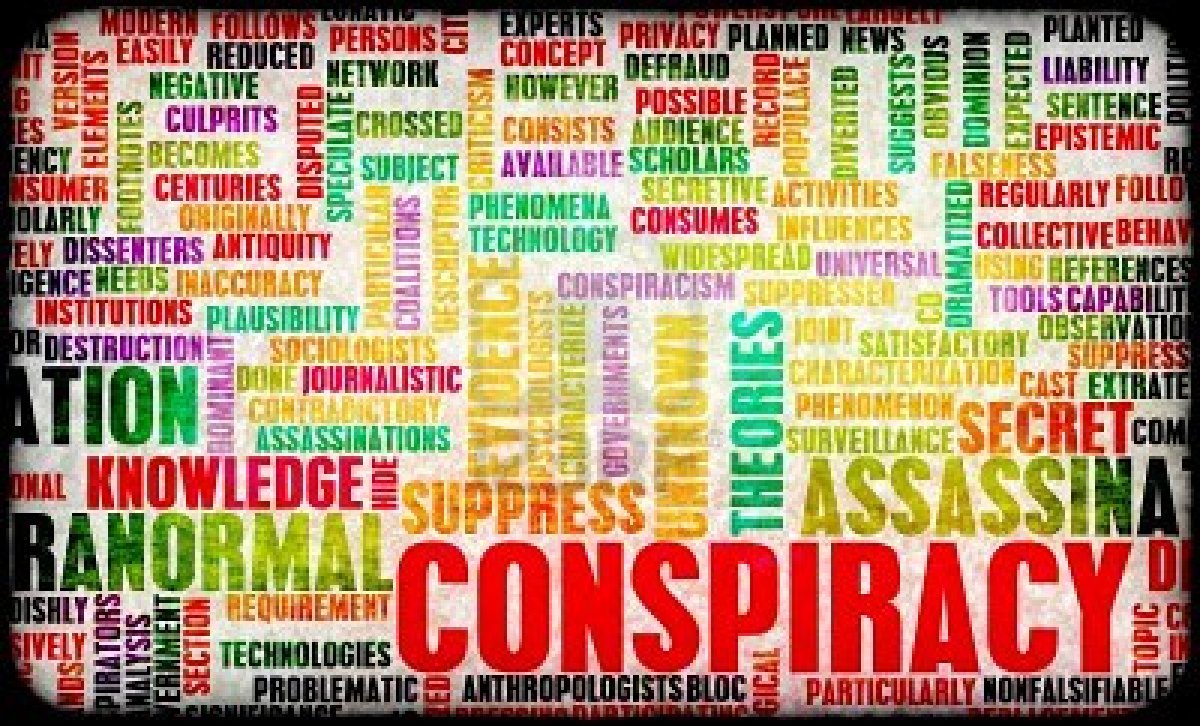Good, Bad, and Ugly Conspiracy Theories
by Paul Austin Murphy (October 2016)

Let the UK Independent introduce us to contemporary conspiracy theories. Nick Harding writes:
“The number of people who believe conspiracy theories is staggering. According to various recent surveys, a third of Brits believe Princess Diana was murdered (a Daily Mail survey), a quarter believe the moon landings were faked (from Engineering and Technology magazine), nearly half of all Americans do not believe global warming is man-made (a Yale University survey) and 84 per cent of them believe 9/11 was an inside job (a New York Times/CBS poll).”
Take this very common problem just to begin with. What does the conspiracist do when he discovers that there are various mutually-contradictory theories about the very same conspiracy (as is the case with 9/11, AIDs, J.F. Kennedy, Jack the London Ripper, etc.)?
Mitigated Scepticism
Surely amongst all the above there must be at least some truth. Perhaps a lot of truth!
Joel Levy, as I said, tends to be far less sceptical than McConnachie and Tudge. Indeed Kenn Thomas (the editor at Steamshovel Press) says that Levy “does not embrace every theory as absolute truth, but neither does he dismiss them as total bunk.” This hints at a progression from conspiracy theories deemed to be “total bunk” to those which Levy largely accepts as true (or at least largely true).
As for Levy, take just one example (amongst very many).
Levy writes that there is “evidence that the FBI investigations into some hijackers were squashed from on high in the weeks proceeding 9/11” (56). This points to the idea that Bush and Co. let the attack happen. Or as Levy puts it:
There are many other anomalies and problems regarding 9/11 which Levy tackles. However, with his four years of retrospect, Levy believes that
“the most disturbing part if the whole [9/11] scenario has been the remarkable quiescence of mainstream media and its reluctance to challenge the unconvincing official version.” (59)
“about the Illuminati and their new world order simply obscures and detracts from genuinely helpful conspiracy research, helping those with something to hide – the secret state, for instance – to dismiss serious researchers as nuts and fruitcakes.” (78)
Tudge and McConnachie cite various conspiracies which actually occurred. They give the following examples:
An even more sceptical commentator on conspiracy-theorising, David Aaronovitch (in his Voodoo Histories), also accepts the fact that conspiracies have and still do occur. He cites a couple of his own examples. Thus:
David Aaronovitch, for example, detects various problems.
For example, there is “the tendency among conspiracists to quote each other so as to suggest a wide spread expertise lending support to the argument.” (12) In addition, we have the “death by footnote” syndrome. In this case,
“the exposition of the theory is a dense mass of detailed and often undifferentiated information, but laid out as an academic text. Often the theory is supported by quotations from non-conspiracist sources that almost invariably turn out to be misleading and selective.” (12)
“Conspiracists [Marxists] are always winners. Their arguments have a determined flexibility whereby any new and inconvenient truth can be accommodated within the theory itself.” (13)
Aaronovitch also cites some examples of conspiracy theories about conspiracy theories. He writes:
“So, embarrassing and obvious problems in the theory may be ascribed to deliberate disinformation originating with the imagined plots designed to throw activists off the scent.”
This is vaguely related to the idea that loony conspiracy theories are deliberately circulated in order to throw “activists off the scent” of real conspiracies. Joel Levy also believes that obviously-ridiculous conspiracy theories are fed to the gullible public in order to divert its attention away from truthful ones.
Some conspiracy theories about conspiracy theories (like conspiracy theories themselves) may also contain some truth – even a lot of truth! What should we make, for example, of the idea that many conspiracists “are even accused (by other conspiracy theorists) of being the public face of a conspiracy to discredit conspiracy theories” (ix)?
here.)
Conclusion: Total Truth/Total Falsehood?
It may not be the case that most conspiracy theories are neither completely true nor completely false. It may simply depend on examples.
Levy, for example, cites the good and bad aspects of the theory that “Elvis lives!” He writes:
‘Cui Bono? The Conspiracy Theorists!’ at American Thinker.
_____________________________
American Thinker, Think-Israel, Liberty GB, Broadside News, Human Events, Faith Freedom, etc.
Paul Austin Murphy’s Poetry.
To comment on this article, please click here.
To help New English Review continue to publish interesting articles such as this, please click here.
If you have enjoyed this article and want to read more by Paul Austin Murphy, please click here.